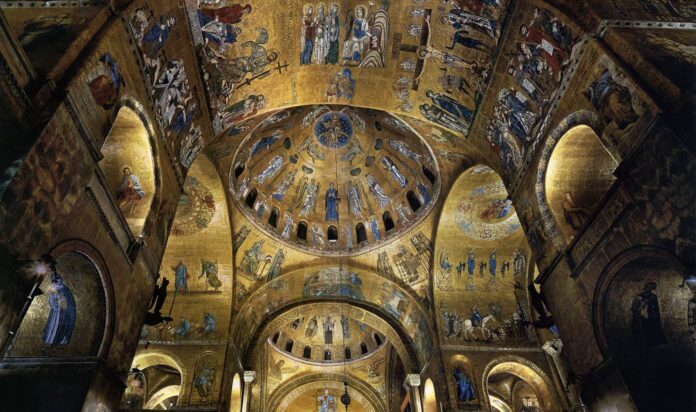There are a variety of liturgical rites that exist in the Catholic Church. The Byzantine family is in union with Rome and has a tradition of the liturgical colours they wear on each feat.
On the feast of Pentecost, they wear green.
The Byzantine Catholic Archeparchy of Pittsburgh explains the symbolism on its website:
‘Since Pentecost was originally a feast of harvest, as was mentioned above, the Jews used to decorate their homes with the fruits of the harvest-flowers, green foliage, garlands etc.-in order to add more pomp and solemnity to their celebrations. This same custom was also adopted by the Christians. To them, however, the green branches and flowers took on a symbolic meaning of divine life and the gifts of the Holy Spirit.
Furthermore, “The green colour of the foliage was accepted by our people as a symbol of divine life brought to us by the Holy Spirit. For this reason, also, the clergy wear green vestments for the liturgical services on Pentecost and its postfestive period.”
Nicholas Gihr in his book The Holy Sacrifice of the Mass brings to mind the images of a tree and garden to explain its symbolism:
‘Green is in harmony with the very nature of the Church—she is a mighty tree, which lifts its top majestically toward heaven, spreads its shady branches and leaves in benediction over the earth, resplendent with the richest blossoms, bringing forth choice fruits of grace and virtue u in abundance. She is the watered garden of the Lord; Christ, the good shepherd, leads his sheep to ever green pastures. The Church clothes herself in green vestments to express her joyous, lively hope of the ever lovely and eternally verdant meadows of the heavenly paradise, of the incorruptible inheritance and the unfading crown of glory in Heaven.’
Many Slavic countries celebrate Green Holidays after the feast of Pentecost, extending the celebrations of Pentecost for a full week.



